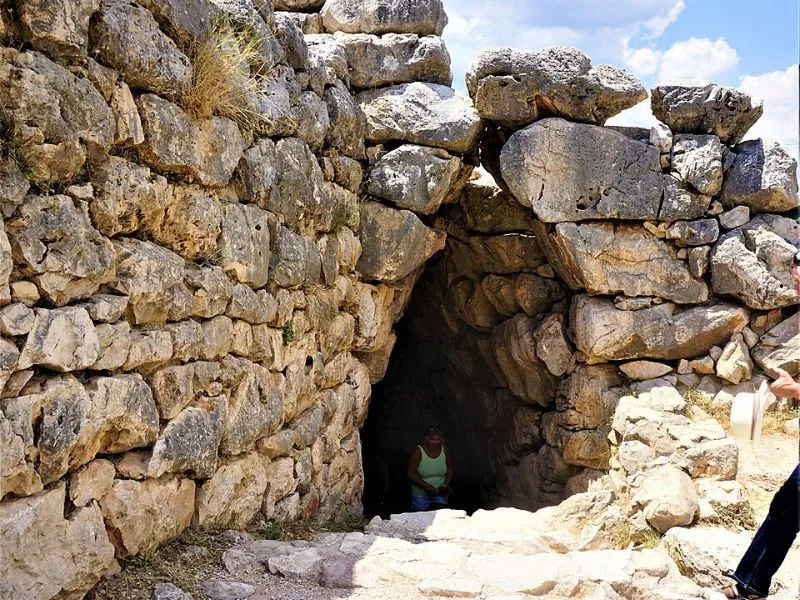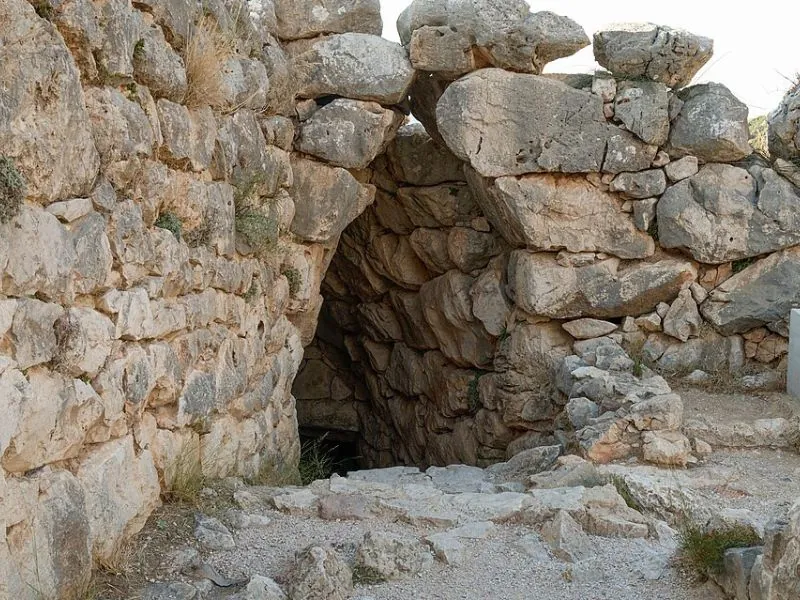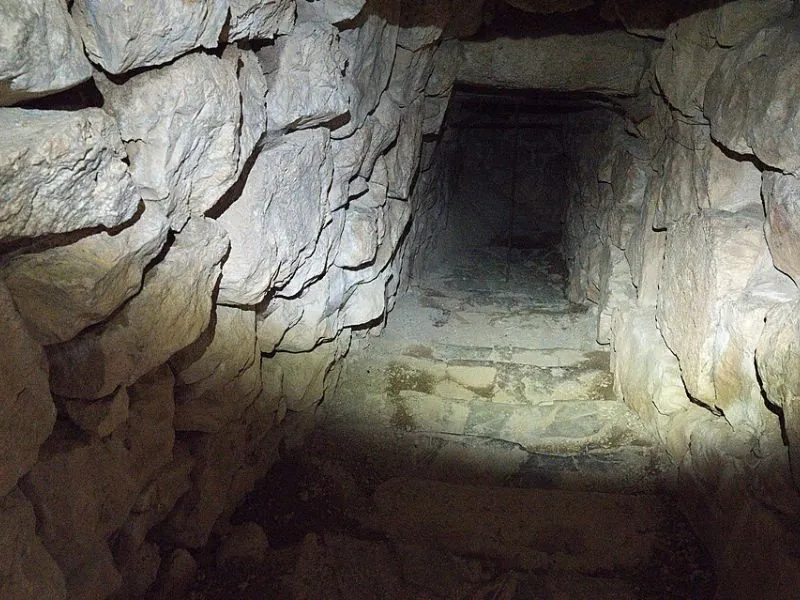
High walls and lion gates impress, yet a fortress falls if its wells run dry. To solve that problem the engineers of Late Helladic IIIB (c. 1250 BCE) carved the Underground Cistern of Mycenae deep inside the citadel rock.
A steep, torch-dark stair of 99 steps leads to a clay-lined reservoir once fed by an aqueduct from the Perseia spring. Step below ground and you grasp how Mycenae planned to outlast drought or siege.

| Feature | Detail |
| Water source | Perseia Fountain, 300 m north-east and 13 m higher than the acropolis. |
| Aqueduct | Terracotta pipes buried under clay carried flow to a settling tank outside the wall. |
| Inflow | An aperture at roof height near the stair’s end allowed gravity feed into the chamber. |
| Reservoir | Rectangular basin ≈ 4 × 3 m, double-coated with hydraulic lime plaster; capacity 30–40 m³. |
| Overflow | A stone channel beneath the floor diverted excess back toward fields—evidence of water-management savvy. |

Linear B tablets list ku-wa-te-ro—“water-carriers”—assigned to haul leather bladders up the stair. In peacetime they filled palace vats; in wartime they passed skins hand-to-hand while gate-watchers barred the Postern outside. Contemporary sling stones and bronze arrowheads recovered from guard niches hint at tense shift work in the torch-lit tunnel.

Legend says king Agamemnon drank from this hidden spring before marching to Troy. While unverifiable, the story underscores local memory of the Underground Cistern of Mycenae as lifeline and symbol.
Today, silence broken only by water-drips and visitor breaths conjures an atmosphere closer to cave than quarried tunnel—one reason many travellers rank the descent their most evocative Mycenae moment.
Walls and gates flaunted Mycenae’s might, but the Underground Cistern of Mycenae sustained it. Hidden engineering—vaulted stairs, clay-lined basin, gravity aqueduct—proved as decisive as any sword in ensuring the citadel could resist siege and drought.
Descend the 99 steps with torch in hand, and you walk the same path water-bearers trod 3 200 years ago—proof that in the ancient world, power flowed as much from smart hydraulics as from heroic kings.